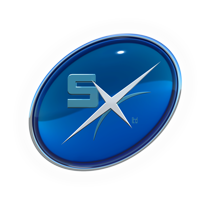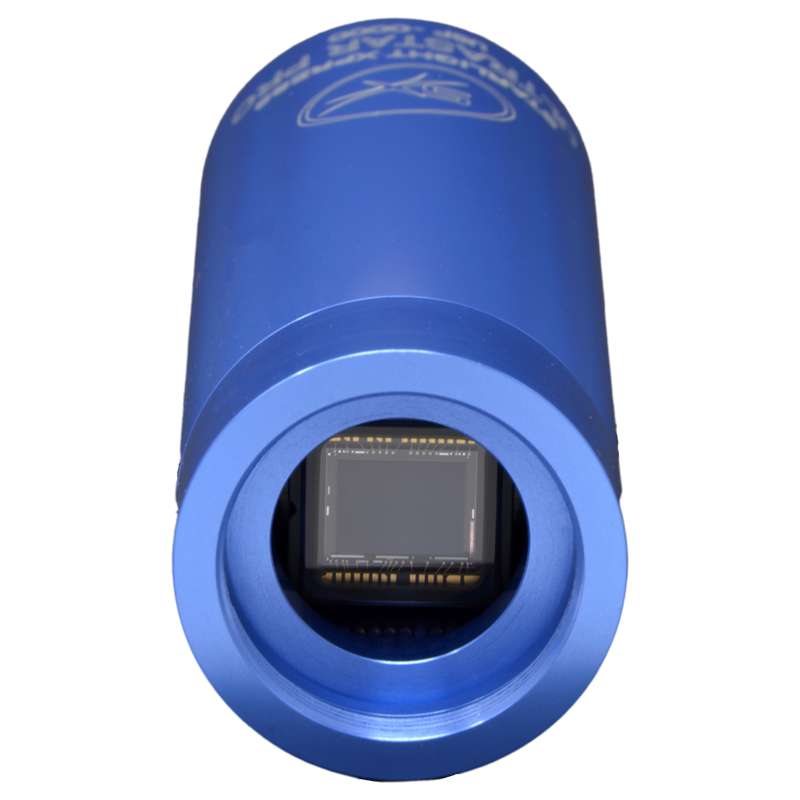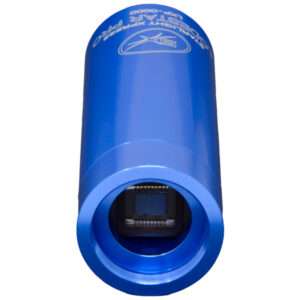UltraStar Imaging/Guide Camera (Mono)
Description
The Ultrastar PRO cameras are advanced versions of our ‘Superstar’ guide camera and have a similar resolution of 1392 x 1040 pixels. However, the CCD chip has 70% more area and the QE is considerably greater, at around 75% peak. These characteristics give the Ultrastar an excellent performance as both a guide camera and an imaging camera, which is especially well suited to ‘Live Viewing’ mode. Some years ago, Paul Shears released a simple to use program called ‘Lodestar Live’, which uses the SX Lodestar in ‘Live Viewing’ mode. This has now been upgraded to ‘Starlight Live’ and is capable of controlling both the Lodestar and the Ultrastar in Live view. It can also colour convert and stack images from the single-shot colour versions of these cameras.
M27 from a stack of 40 x 10 second Ultrastar frames in Starlight Live. Taken with Takahashi FSQ106 at F/5
[fusion_gallery layout=”” picture_size=”” columns=”” column_spacing=”” gallery_masonry_grid_ratio=”” gallery_masonry_width_double=”” hover_type=”” lightbox=”yes” lightbox_content=”” bordersize=”” bordercolor=”” border_radius=”” hide_on_mobile=”small-visibility,medium-visibility,large-visibility” class=”” id=””][fusion_gallery_image image=”https://www.sxccd.com/wp-content/uploads/2020/03/M27-ultrastar-800×600.jpg” image_id=”2053|full” link=”” linktarget=”_self” /][/fusion_gallery]
Specification
- CCD: Sony ICX825AL ExView2 monochrome CCD
- Pixel count: 1392(H) x 1040(V)
- Pixel size: 6.45 x 6.45uM
- Optical size: 8.98 x 6.71 mm
- Read noise: Typically 5.0 electrons
- QE: Peak QE 75% (yellow light)
- Gain: 0.3 e/ADU
- Barrel size: 31.75mm dia. x 85mm long (1.25 inch eyepiece push fit size)
- Barrel thread: 25.4mm x 0.75mm ‘CS’ mount lens thread
- Input connection: ‘Mini B’ USB socket for USB2.0
- Output connection: Standard RJ12 autoguider socket
- Output type: Opto-isolated 4 lines (N,S,E & W) pull down with common return line
- Download rate: Approx. 2 frames per second in binned 1×1 mode
Software
Ultrastar ‘live viewing’ imaging software – new version 2, courtesy of Paul Shears
New features:
- Added multi-spectrum stacking capability. Colour channels can be masked during stacking process.
- Added ability to select individual colour channels for display (multi-spectrum).
- Display Processing ‘Reset’ button now resets all colour channels to defaults as this is more intuitive for multi-spectrum.
- Added button on Image Export tab to save the current stacked image in FITS format (prior to display processing – i.e. the current raw stack).
- Added colour channel mask to the automatically generated filename when exporting raw FITS files.
- Added command line parameter ‘-load-image-rggb’ to permit loading of Bayer RGGB encoded images. This can be used to later load and display a FITS file saved using the save current stacked image to FITS file feature (when image was colour).
- Image repeat dialog display mirrors the main display window, including any zoom applied plus overlays.
- Disable image registration during stacking by setting Max Displacement to 0 (i.e. images are just stacked without any alignment).
- Improvements to star pattern matching algorithm to increase robustness of correspondence (especially with Ultrastar images).
- Enhancements to star extraction algorithm.
- On key frames, image is divided into 4×4 grid and the 3 brightest stars are selected from each grid to limit the number of stars to be matched.
- When matching stars, the corresponding star is searched for inside a bounding area defined by Max Displacement plus 10% with respect to the position of the keyframe star. All candidates within this area are then used for correspondence matching.
- Fixed undo bug that caused exposure number to keep decrementing when ‘undo last’ is clicked after an undo is applied.
- Added keyboard shortcuts to zoom and pan the image display
+ or = : Zoom display in (2x each key press)
– : Zoom display out (2x each key press)
LEFT: Pan left.
RIGHT: Pan right.
UP: Pan up.
DOWN: Pan down. - Added keyboard shortcuts for the display processing tab. One of the functions (i.e. black level, white level) is selected via the numeric keys, and then this can be modified by other keys to decrement or increment the value instead of using the UI slider control.
1: Select Black Level
2: Select White Level
3: Select Brightness
4: Select Contrast
5: Select Saturation
6: Select Hue
{ or [ : Fast decrement
} or ] : Fast increment
< or , : Slow decrement
> or . : Fast increment - Multiple performance enhancements to the display processing algorithms. These now use multiple CPU cores during processing. The more cores the faster the algorithms run.
Download ‘Starlight Live’ for Windows – version 3.3
Download ‘Starlight Live’ for Mac OSX – version 3.3






